Those Drawings
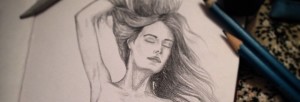
I’ve been drawing the last few days a little more. Drawing always takes me back to the college years when I walked around with my sketchbook just like Jack Dawson, the character played by Leonardo DiCaprio in Titanic. Those drawings also looked very similar. Drawing was a daily activity at any given chance. I don’t think I developed a classical drawing technique but I always had fun.
It is always interesting to see people’s reactions. The reaction to those drawings is still the same today after 20 years. I wish I knew back then about attribution theory, although I think I asked the right questions to their curious and judgmental questions about the nude figure. People ask why are the drawings nude and why I don’t draw clothes on them. My answer is that I’m a figure artist and not a fashion designer. I wonder if people ask OB-GYN physicians to change their specialty to something less intrusive.
People assume that because the drawing is a nude figure it is something impure, dirty, or sexual. This is not surprising in a society that measures the value of a human being based on their sexuality and not in the intrinsic value as a person. The figure is just visually interesting. The human body is a beautiful thing. No, I don’t see people naked when I walk around. I don’t have x-ray vision. I guess, and attribution theory comes to play again, that people see the way they see because of who they are. People will produce and interpret things based on their condition. However, the intentions of the heart are exposed to One and I am not the One to judge or justify.

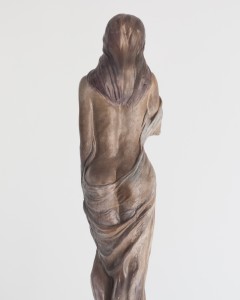
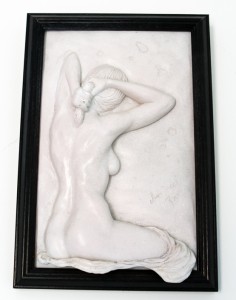
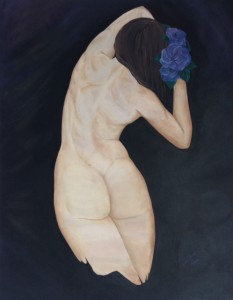

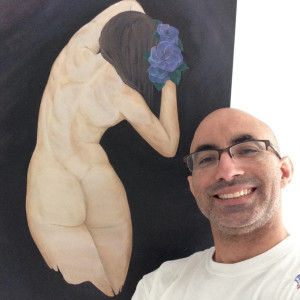 Detailing the muscles is very challenging but so much fun. I work one small area at a time and connect the muscles until the figure is complete. Hair comes after. To add a little something to the composition I added flowers this time. I was going in different directions with the flowers once I added the blue roses (which were originally purple) close to the head. First, and that was the original idea, I wanted to create a ‘u’ shaped frame of flowers and vines on the bottom half of the canvas. It was too much for me. The next idea was to just add a few flowers closing the figure at the bottom. I was not feeling it either, so I left it like that with just three blue roses. The rest is about cleaning up the details. After about 12 hours I was very satisfied with the result.
Detailing the muscles is very challenging but so much fun. I work one small area at a time and connect the muscles until the figure is complete. Hair comes after. To add a little something to the composition I added flowers this time. I was going in different directions with the flowers once I added the blue roses (which were originally purple) close to the head. First, and that was the original idea, I wanted to create a ‘u’ shaped frame of flowers and vines on the bottom half of the canvas. It was too much for me. The next idea was to just add a few flowers closing the figure at the bottom. I was not feeling it either, so I left it like that with just three blue roses. The rest is about cleaning up the details. After about 12 hours I was very satisfied with the result.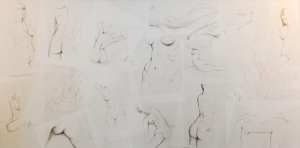
The Science in the Art
It has been a while since last time I wrote in my blog. It has been a great journey so far this semester teaching Inquiry at Quinnipiac University, the academic advising experiment, the sculpting and painting parties, the workshops and talks on Business Needs Assessment with an Inquiry Approach, the show that just ended at Spectrum Gallery, the sculpting demo I had there back in March, the sculpting workshop at Columbus School through ARTE Inc., the computer classes at the now Literacy Volunteers of Southern Connecticut, and a new partnership unfolding that gets me closer to understand my mission and the reason I do what I do… Well, that was a long sentence… Things are wrapping up as we are about a month away to finish the semester. The summer (if we get one this year in New England) is already promising good things. I think that brings us up-to-date in everything that is happening.
The Science in the Art
My students were working in groups to get feedback from each other as they prepared for their oral presentations. This is one way research in peer tutoring learning environments supports practice and practice supports research. In the process, one student was trying to find a connection between health sciences, specifically medicine, and art. To serve as an example that helped make the connection clear and concrete we have the Frank H. Netter M.D. School of Medicine at Quinnipiac University. Frank H. Netter M.D. was a surgeon and world’s most prolific medical illustrator. He helped medicine understand the human body with his illustrations. Interestingly, when people study medicine they call it medical arts. Not finding the connection yet? Let me help you understand. All the knowledge in science, or in any field, is incomplete without the capacity to think creatively to solve specific issues or to accurately come up with a diagnosis.